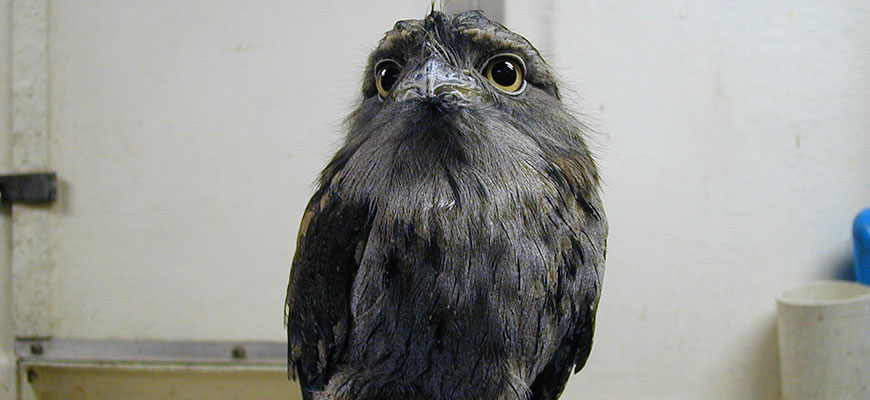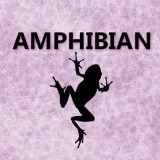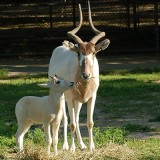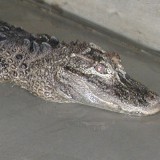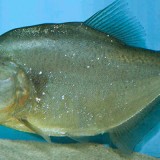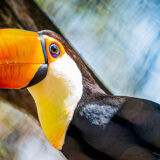CLASSIFICATION
Order: Caprimulgiformes
Family: Podargidae
Genus: Podargus
Species: strigoides
RANGE
Australia and Tasmania.
HABITAT
Forest.
SIZE
19 inches.
REPRODUCTION
- The sexes are alike.
- Breeding season is from August to December.
- They always nest in trees, usually in fork of a horizontal branch.
- Some make a frail stick platform, others a pad of their own feathers camouflaged with lichens, mosses and spider webs.
- One or two white eggs are laid and incubated for 30 days by both sexes, the female by night and the male by day.
- The young are covered with long white down feathers.
- They remain in the nest until they are able to fly (approximately 30 days after hatching).
- Both male and female care for the young.
DIET
Wild: Feeds on crawling invertebrates such as beetles, centipedes, scorpions, caterpillars and occasionally mice and geckos.
Zoo: Mice.
BEHAVIOR
- Nocturnal.
- During the day they sleep perched upright on a stump or among the large branches of a tree with their heads up and their eyes closed.
- Their cryptically mottled brown and gray color, so matches the branch that they look like part of it and are almost impossible to see.
- A ground feeder, the Tawny watches quietly from a stump or branch until it spots its prey then it silently flutters down on it.
- If alarmed they freeze in position and sometimes make a buzzing sound like a bee.
- If surprised at its nest the frogmouth fluffs out its feathers to make itself appear much larger and snaps at the intruder with its large bill.
- They are weak fliers.
STATUS
Common.
POINTS OF INTEREST
- They have rounded, moderate length wings, short legs and have small feet with a comb on the underside of the middle toenail.
- It is thought to be for dressing the feathers.
- They have large, flat, horny, triangular, sharply hooked bills with tremendous gaping mouths fringed with bristles.
- When open, these huge mouths disclose a colored lining which may attract insects.
- They are a type of goatsucker. This name comes from a mistaken belief that with their huge mouths, they milked goats at night.
- Their soft, fluffy plumage resembles that of their nearest relatives, the owls.
- They have two color phases (red and gray).
- Their call is a grunting “oom-oom” repeated through the night

